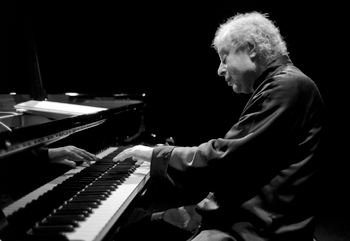by Daniel Hathaway

Part of Oberlin’s Artist Recital series, the program is also the first in a cycle of three recitals featuring the last sonatas of these four composers that Schiff is performing widely this season. Friday’s program included Haydn’s C-Major Sonata, Hob. XVI:50 (1794), Beethoven’s Sonata No. 30, Op. 109 (1820), Mozart’s C-Major Sonata, K. 545 (1788), and Schubert’s c-minor Sonata, one of the three great sonatas of 1828.
Certainly other pianists have curated programs similar to this one, but Schiff made the occasion special by playing its four pieces end to end, without intermission and without leaving the stage. The Hungarian-born artist is a true patrician at the keyboard, playing with understated elegance and total control over tone, dynamics, and phrasing. Schiff shapes the overarching narrative of pieces and their individual movements with a master’s hand while shining tiny lights on their inner details.
In Schiff’s hands, the Haydn and Mozart sonatas — often thought of as easy student pieces — earned their places next to the long, complex works by Beethoven and Schubert. The pianist’s penetrating glimpse into their inner sophistication and his attention to their musical wit and humor revealed a cheerful profundity that would probably send more than a few pianists in the audience back to their keyboards for a second look at these pieces.
Beethoven’s Op. 109 Sonata could be accused of having attention deficit disorder. Schiff’s transitions and instant plunges into each new idea made perfect sense out of a piece that vexes many pianists. He brought robust but never brutal fortes out of the Bösendorfer instrument, and voiced the final Gesangvoll section and its variations with melting affection.
Schiff also handled the sudden contrasts in Schubert’s c-minor Sonata with a masterful view of their position in each movement and fine attention to their color shifts. He kept the music in the first movement flowing, allowing the piece to unfurl with agreeable progress and producing diaphanous runs between dramatic interjections. The final Tarantella was fleet and light — a nice change from the usual frenetic, dance-away-the-spider’s-venom style — but Schiff switched its mood on a dime for the calm middle section before the dance spun away again.
The pianist’s transporting performance took just over an hour. Once the audience came down to earth, they gave Sir András a thundering ovation. What could he possibly offer as a bonus piece to follow the Schubert? More out-of-this-world Schubert proved to be the only choice. He gave us an expressive performance of the slow movement from the great A-Major Sonata, yet another moment of heaven on earth.
Published on ClevelandClassical.com February 16, 2016.
Click here for a printable copy of this article



